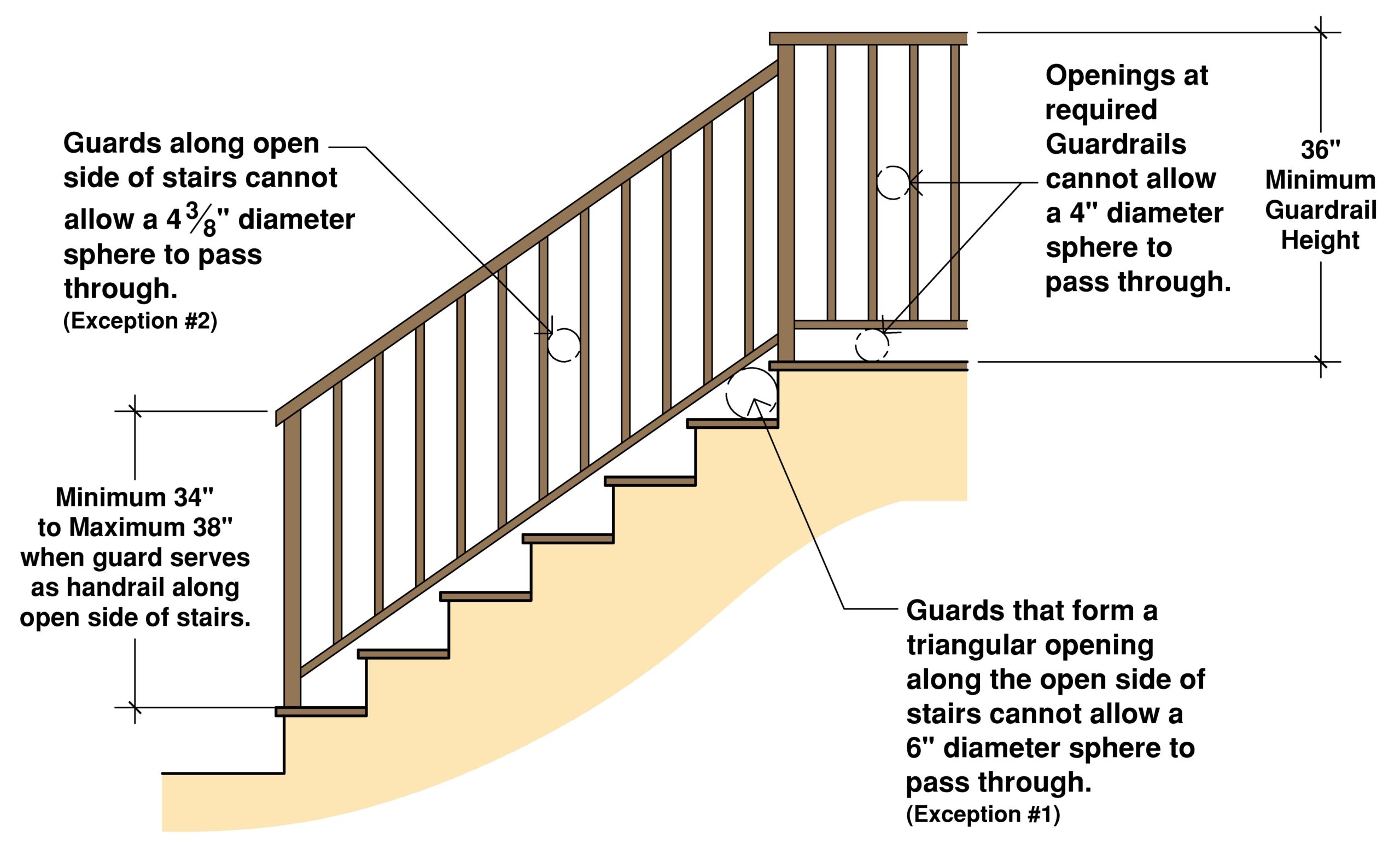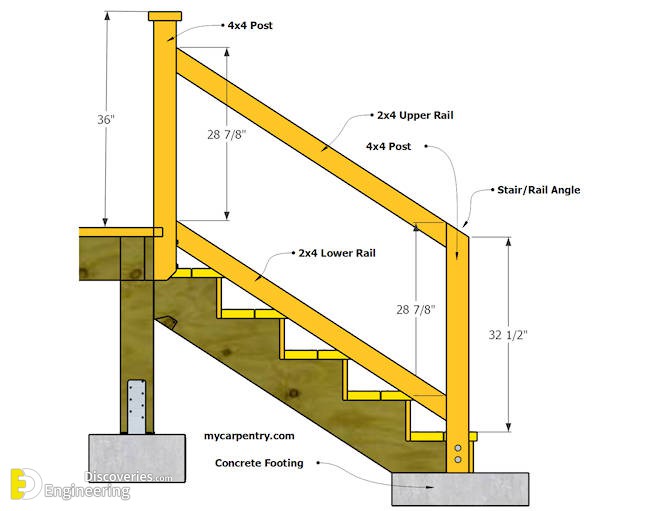Safe and Secure: Mastering Stairway Handrail Height Regulations
Navigating stairs safely is a fundamental aspect of accessibility and safety in any building. A critical component of stair safety lies in the proper height of handrails. Understanding and adhering to stairway handrail height regulations is paramount for ensuring a secure environment for everyone, from young children to the elderly.
Imagine a world without standardized handrail heights. The risks are immediately apparent – trips, falls, and potential injuries become far more likely. This is precisely why building codes and regulations dictate specific requirements for handrail heights. These codes, often based on extensive research and analysis, aim to minimize the risk of accidents and promote universal accessibility.
Historically, handrail regulations have evolved alongside our understanding of human factors and safety. Early building practices may not have prioritized handrail heights to the extent we do today. However, as awareness of safety and accessibility grew, so did the need for standardized regulations. This evolution reflects a societal shift towards prioritizing inclusivity and well-being in building design.
The importance of adhering to prescribed handrail heights cannot be overstated. Compliance ensures that individuals of varying heights and abilities can utilize stairs safely and comfortably. Proper handrail placement and height provide essential support and balance, especially for those with mobility challenges or visual impairments.
One of the main issues related to handrail height compliance is the variation in regulations across different regions and building types. Understanding the specific requirements applicable to your project is crucial. Failing to comply can lead to legal repercussions, costly rework, and most importantly, compromises the safety of those using the stairs.
Building codes typically define handrail height as the vertical distance between the top surface of the handrail gripping surface and the nosing of the stair treads. A common height requirement is between 34 and 38 inches. This range is designed to accommodate the average human reach and provide adequate support while ascending or descending stairs.
Benefits of correct handrail height include enhanced safety, improved accessibility, and compliance with building regulations. For instance, a handrail at the correct height can prevent a stumble from turning into a fall, ensuring a safer environment for everyone. Proper height also allows individuals with limited mobility to navigate stairs more confidently.
To ensure handrail compliance, engage a qualified professional to measure and install handrails according to local building codes. Regular inspections and maintenance are essential to ensure that handrails remain secure and at the correct height over time.
Advantages and Disadvantages of Standardized Handrail Heights
| Advantages | Disadvantages |
|---|---|
| Increased Safety | Potential cost increases for unique designs |
| Improved Accessibility | May require adjustments to existing structures |
| Code Compliance | Variations in code requirements across jurisdictions |
Best practices include using durable handrail materials, ensuring consistent height along the entire stairway, and providing continuous handrails on both sides of the staircase where required by code. Employing a qualified contractor specializing in stair construction is highly recommended.
Challenges in implementing handrail height regulations can include accommodating unique stair designs, retrofitting existing stairways, and interpreting complex code requirements. Solutions include consulting with architects and accessibility specialists, utilizing flexible handrail systems, and seeking clarification from local building authorities.
FAQ:
1. What is the standard handrail height? (Answer: Typically between 34 and 38 inches.)
2. Do I need handrails on both sides of the stairs? (Answer: Often required, but depends on local codes and stair width.)
3. What materials are acceptable for handrails? (Answer: Various materials are allowed, including wood, metal, and composite materials.)
4. How do I measure handrail height correctly? (Answer: Measure vertically from the nosing of the treads to the top of the gripping surface.)
5. Where can I find my local building codes? (Answer: Check with your local building department or municipality.)
6. What are the penalties for non-compliance? (Answer: Can vary but may include fines and mandatory corrections.)
7. Are there exceptions to handrail height requirements? (Answer: Some exceptions may exist for specific circumstances; consult local codes.)
8. How often should handrails be inspected? (Answer: Regular inspections are recommended, especially in high-traffic areas.)
Tips and tricks include using a level to ensure consistent handrail height and documenting all measurements for inspection purposes. Regular cleaning and maintenance can also extend the lifespan of your handrails.
In conclusion, adhering to code-compliant handrail heights is not merely a matter of checking a box on an inspection form; it is a crucial investment in safety and accessibility. Properly installed handrails provide essential support and balance, significantly reducing the risk of falls and ensuring that everyone can navigate stairs with confidence. By understanding the importance of handrail height regulations, engaging qualified professionals, and staying informed about best practices, we can create safer and more inclusive environments for all. Investing in proper handrail installation is a small price to pay for the peace of mind and enhanced safety it provides. Don't compromise on safety; ensure your handrails meet the required standards and contribute to a more accessible world for everyone.
Clean water at your fingertips exploring coway water filter systems
Revitalize your deck with behr exterior deck paint
North creek community center your hub for connection








/stair-handrail-and-guard-code-1822015-FINAL1-5c054b4dc9e77c0001600219.png)


:max_bytes(150000):strip_icc()/stair-handrail-and-guard-code-1822015-final-CJ-01-157768d7ac40439da36f9ba69faa00c6.png)


